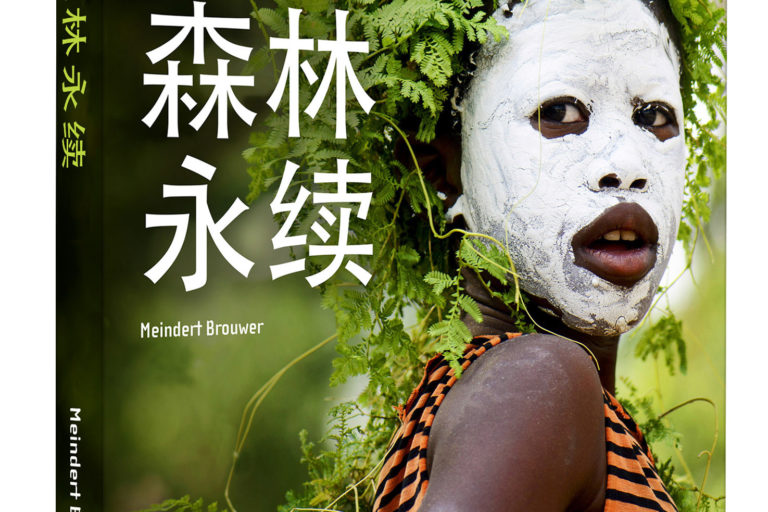Key points
- “Central African Forests Forever” is a new, 17-chapter book by independent conservationist and writer Meindert Brouwer.
- One unique aspect of the book is the author’s focus on how Chinese pioneers in sustainable forest management have put forth solutions to safeguard the rainforests of Central Africa, the world’s second-largest after the Amazon.
- Brouwer’s book is available in French, English, and Chinese, and is free to download online.
According to communications consultant Meindert Brouwer, author of Central African Forests Forever, there are still opportunities to save the Central African — or Congo Basin — rainforest.
Brouwer’s 216-page, 17-chapter book is an update of a book by the same name that was first published in 2017. In the new edition, released in November 2021, he writes that moving from slash-and-burn to sedentary farming could help save Salonga National Park in the Democratic Republic of Congo (DRC) from destruction.
Brouwer says that “slash-and-burn agriculture is still a major, if not the most important, driver of deforestation in the Congo Basin.” He also suggests strategic road planning could be part of the solution.
The book tackles the diversity of issues that face forested countries in the region. One chapter looks at Gabon, a Central African country that is home to tens of thousands of forest elephants (Loxodonta cyclotis). Brouwer notes that the future of this high-forest, low-deforestation country is not yet set in stone.
He says all forest concessions in Gabon must be managed “in a sustainable manner according to the standards of the Forest Stewardship Council (FSC).” Adherence to this international standard would play a part in the transition to sustainable forestry and could serve as an example for other countries in the Congo Basin, Brouwer says.
He also sees the fortunes of forest-dependent communities as intertwined with the future of the forests. Their economic development is key to forest conservation, Brouwer writes.
“If the people living in the forest were free to develop a sustainable way of life without poverty, the chances of keeping the forest intact and conserving biodiversity would increase,” he said in an email.
The reputation of some Chinese companies involved in the timber trade and other forest products has deteriorated recently, Brouwer writes. But, he says, it’s also an opportune moment for thought leaders from China to provide conservation solutions that lead to the protection of Central Africa’s forests.
“Green pioneers in China, such as the China Responsible Forest Product Trade and Investment Alliance (China RFA), are supporting Chinese timber companies in the sustainable management of forests in the Congo Basin,” he said.
The goal would be a sustainable supply chain for forest products from responsible sources, Brouwer said.
For Brouwer, what these Chinese pioneers do is very important for the future of Central African forests. He observes a rising awareness in China around environmental protection and nature and biodiversity preservation in Central Africa.
The voluntary guidelines championed by Chinese conservationists could become binding laws in China in the future, Brouwer says. He adds he hopes that, as a result, China’s overseas timber industry would then be forced to become sustainable.
Leaders of the countries in the Congo Basin “must take responsibility and not allow Chinese timber and mining companies to rob the Congo Basin,” Brouwer said.
According to Jos Damen, head of the library at the African Studies Centre Leiden in the Netherlands, Brouwer’s book “is important, because it not only shows the vitality and diversity of Central African forests, but also demonstrates practical solutions and alternatives.” He says the book is a fascinating read, covering a range of topics, including bonobos, gorilla tourism, palm oil, rainforest plantations, charcoal consumption, and more.
Meindert Brouwer’s book is available in French, English and Chinese. It is free to download online.
Read original article here.

